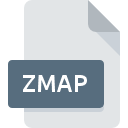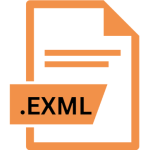.ZMAP File Extension

Zombies Ate My Neighbors Map File
| Developer | Konami |
| Popularity | |
| Category | Game Files |
| Format | .ZMAP |
| Cross Platform | Update Soon |
What is an ZMAP file?
.ZMAP files are map files associated with the iconic video game “Zombies Ate My Neighbors.”
Developed by LucasArts and released in 1993 for the Super Nintendo Entertainment System (SNES) and Sega Mega Drive/Genesis platforms, “Zombies Ate My Neighbors” achieved cult status for its humorous take on horror themes and its challenging gameplay.
The game revolves around saving neighbors from various horror-inspired scenarios, including zombies, vampires, werewolves, and other monsters.
.ZMAP files serve as the blueprints for the game’s levels, containing critical information regarding terrain layout, enemy placement, item locations, and other level-specific data.
More Information.
Upon its release, “Zombies Ate My Neighbors” captivated gamers with its challenging yet entertaining gameplay and clever level design.
The .ZMAP files played a crucial role in this experience, allowing players to traverse through diverse environments filled with undead adversaries and fiendish obstacles.
Initially, the primary purpose of .ZMAP files were to store level data in a compact and standardized format. This enabled the game to load levels efficiently and accurately recreate the developer-designed experiences for players.
Origin Of This File.
The creation of .ZMAP files can be traced back to the development process of “Zombies Ate My Neighbors.” As the game’s developers crafted its myriad levels, they needed a means to store and manage the intricate details of each stage.
Thus, the .ZMAP file extension was born, serving as the standard format for saving and loading level data within the game.
File Structure Technical Specification.
.ZMAP files exhibit a structured format designed to encapsulate all essential information pertaining to a particular level within “Zombies Ate My Neighbors.”
While the exact specifications of .ZMAP files may vary based on factors such as game platform and version, they typically include the following components:
- Terrain Layout: Describes the layout of the level, including walls, floors, obstacles, and other environmental features.
- Enemy Placement: Specifies the positions of various enemies throughout the level, including zombies, vampires, werewolves, and other adversaries.
- Item Locations: Indicates the locations of key items such as health packs, weapons, keys, and other power-ups that players can collect during gameplay.
- Special Events: Defines any scripted events or triggers that occur within the level, such as opening doors, activating traps, or spawning additional enemies.
The structured nature of .ZMAP files facilitate efficient parsing and interpretation by the game engine, allowing for seamless loading and rendering of levels during gameplay.
How to Convert the File?
Converting .ZMAP files to other formats or vice versa can be a challenging endeavor due to the proprietary nature of the file format and the lack of standardized conversion tools.
Dedicated enthusiasts and modders have developed utilities and scripts capable of extracting data from .ZMAP files or converting them into alternative formats compatible with modern game engines or level editors.
These conversion methods often involve reverse engineering the structure of .ZMAP files, deciphering their contents, and translating them into a more universally compatible format.
While these approaches may require technical expertise and familiarity with file parsing techniques, they offer the possibility of extending the lifespan of .ZMAP files beyond their original intended use.
Advantages And Disadvantages.
Advantages:
- Efficient storage of level data in a standardized format.
- Facilitates accurate recreation of developer-designed levels during gameplay.
- Enables modding and level creation by providing a structured framework for designing new levels.
Disadvantages:
- Limited compatibility outside of the “Zombies Ate My Neighbors” game environment.
- Lack of comprehensive documentation may pose challenges for reverse engineering or modifying .ZMAP files.
- Dependency on the underlying game engine and platform-specific implementation may hinder portability.
How to Open ZMAP?
Open In Windows
- Emulators: Install an SNES or Sega Genesis emulator such as ZSNES, Snes9x, Gens/GS, or Kega Fusion on your Windows PC.
- Game ROM: Obtain a ROM file of “Zombies Ate My Neighbors” for SNES or Sega Genesis/Mega Drive. Load the ROM file into the emulator to access .ZMAP files within the game.
Open In Linux
- Emulators: Similar to Windows, install compatible SNES or Sega Genesis emulators such as ZSNES, Snes9x, Gens/GS, or Kega Fusion on your Linux system.
- Game ROM: Obtain a ROM file of “Zombies Ate My Neighbors” for SNES or Sega Genesis/Mega Drive. Use the emulator to run the ROM and access .ZMAP files.
Open In MAC
- Emulators: Install SNES or Sega Genesis emulators compatible with macOS, such as OpenEmu or RetroArch.
- Game ROM: Obtain a ROM file of “Zombies Ate My Neighbors” for SNES or Sega Genesis/Mega Drive. Load the ROM file into the emulator to access .ZMAP files.
Open In Android
- Emulators: Install an SNES or Sega Genesis emulator app from the Google Play Store, such as SNES9x EX+ or MD.emu.
- Game ROM: Download a ROM file of “Zombies Ate My Neighbors” for SNES or Sega Genesis/Mega Drive onto your Android device. Use the emulator app to load and play the ROM, accessing .ZMAP files.
Open In IOS
- Emulators: Due to restrictions on the App Store, emulators may not be readily available. However, you can explore alternative app stores or consider jailbreaking your device to install emulators.
- Game ROM: Obtain a ROM file of “Zombies Ate My Neighbors” for SNES or Sega Genesis/Mega Drive through unofficial sources. Use a compatible emulator to run the ROM and access .ZMAP files.













